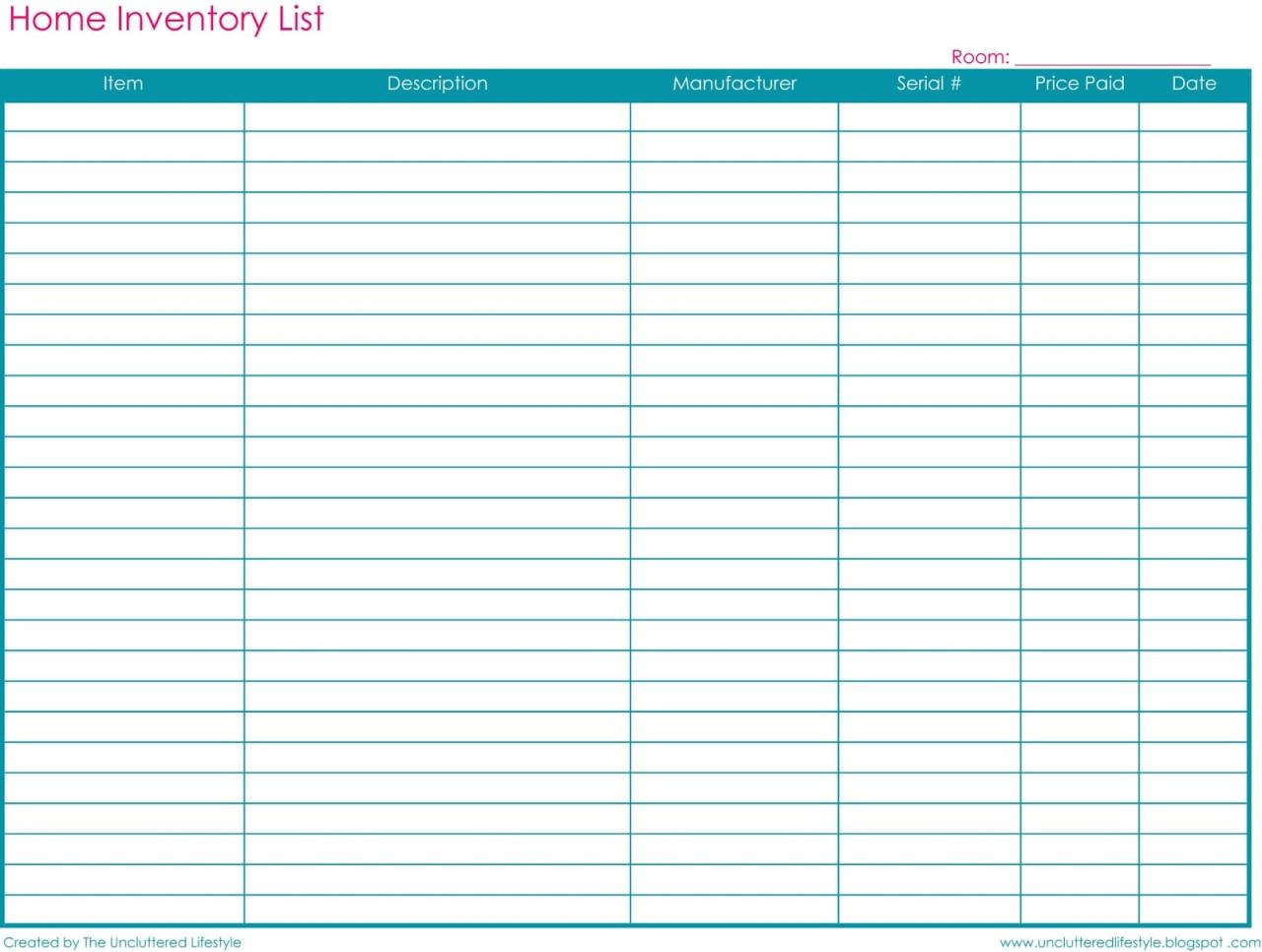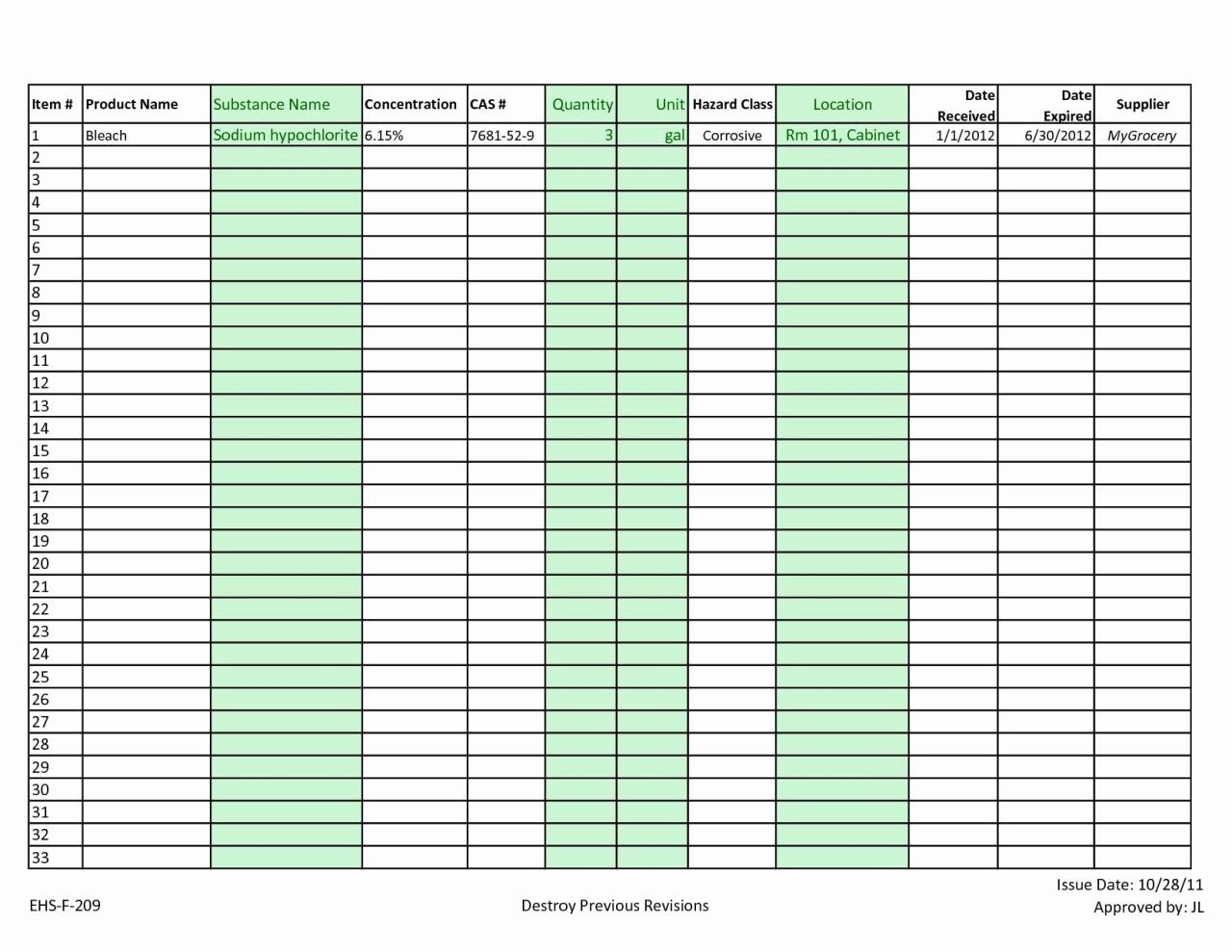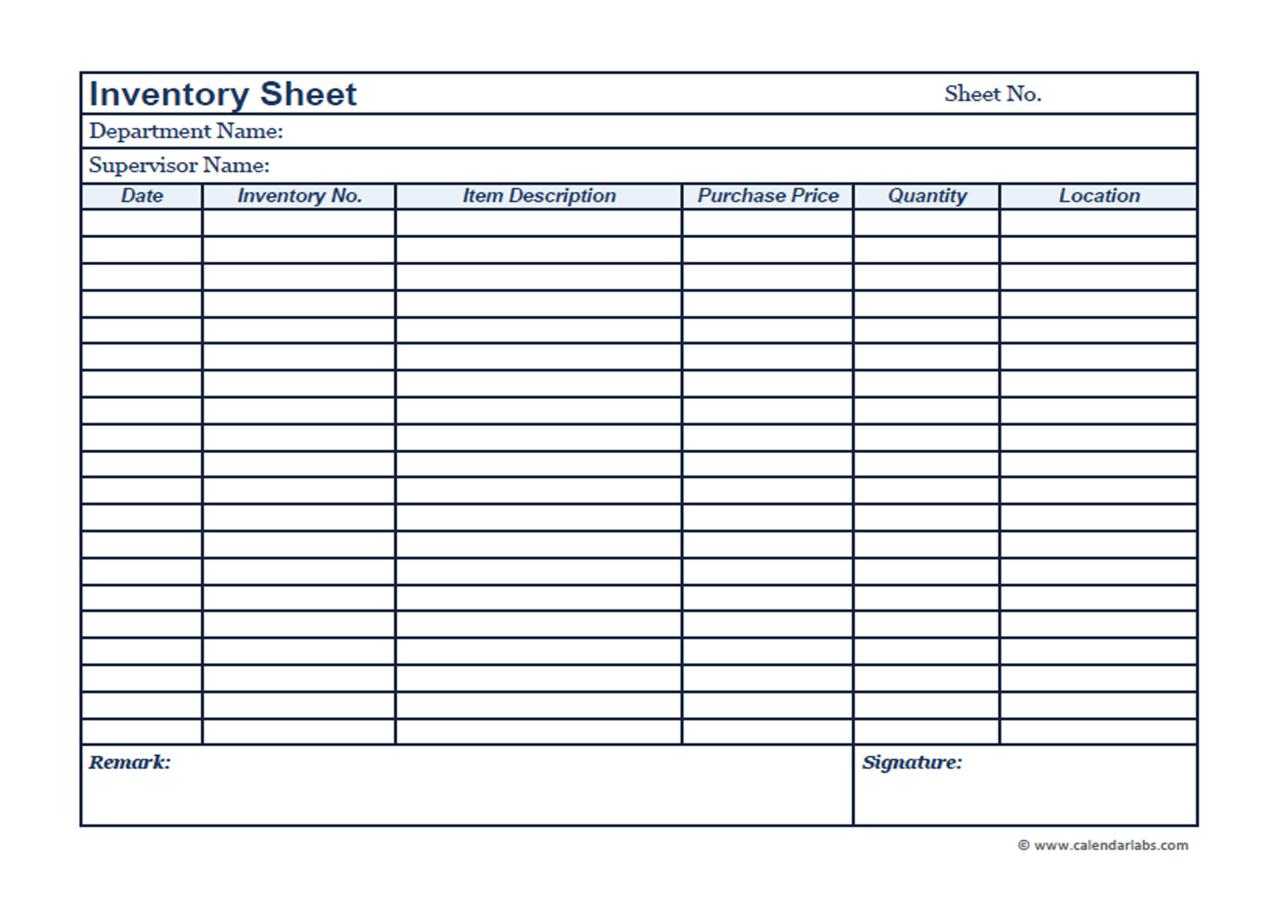In the realm of business, efficient inventory management is crucial for success. The business inventory spreadsheet template serves as a powerful tool that empowers businesses to streamline their inventory tracking, valuation, and organization. Dive into this comprehensive guide and discover how this template can revolutionize your inventory management practices.
This template provides a structured framework that enables businesses to meticulously track inventory levels, ensuring optimal stock levels and preventing costly overstocking or stockouts. With its user-friendly interface and customizable features, the business inventory spreadsheet template empowers businesses of all sizes to gain complete control over their inventory operations.
Spreadsheet Structure: Business Inventory Spreadsheet Template
A business inventory spreadsheet template is designed to provide a structured and organized way to track and manage inventory items.
The basic structure of an inventory spreadsheet template typically includes the following:
- Header Row:Contains column headings that define the data to be entered in each column.
- Item Code Column:Unique identifier for each inventory item.
- Item Description Column:Detailed description of the item.
- Quantity on Hand Column:Number of units of the item currently in stock.
- Reorder Point Column:Minimum quantity of the item that should trigger a reorder.
- Unit Cost Column:Cost of each unit of the item.
- Total Cost Column:Total cost of the items currently in stock.
The rows of the spreadsheet represent individual inventory items, while the columns represent different attributes or data points associated with each item.
Essential Elements
A comprehensive business inventory spreadsheet template should include essential elements to effectively manage and track inventory levels.
These elements provide a clear overview of inventory items, their quantities, values, and other relevant information, ensuring efficient inventory management and decision-making.
Item Description
- A detailed description of each inventory item, including its name, specifications, and any other identifying characteristics.
- Accurate item descriptions are crucial for easy identification and differentiation of inventory items, especially when dealing with similar or interchangeable products.
Quantity on Hand
- The number of units of each item currently available in stock.
- Maintaining accurate quantity on hand data is essential for avoiding stockouts, overstocking, and ensuring timely fulfillment of orders.
Unit Cost
- The cost of acquiring each unit of inventory, including purchase price, shipping costs, and any applicable taxes or fees.
- Accurate unit cost data is necessary for calculating the total value of inventory and determining profitability.
Total Value
- The total value of each inventory item, calculated by multiplying the unit cost by the quantity on hand.
- Total value provides insights into the financial implications of inventory levels and aids in making informed decisions about inventory management strategies.
Reorder Point
- The minimum quantity of an item that should trigger a reorder to maintain optimal inventory levels.
- Establishing appropriate reorder points helps prevent stockouts and ensures a smooth flow of inventory.
Safety Stock
- The additional quantity of an item held in reserve to buffer against unexpected fluctuations in demand or supply.
- Maintaining adequate safety stock levels minimizes the risk of stockouts and ensures business continuity.
Vendor Information
- Contact details, such as name, address, and phone number, of the supplier(s) from whom the inventory items are procured.
- Having readily accessible vendor information facilitates efficient communication and timely reordering when necessary.
Inventory Tracking

Inventory tracking is a crucial aspect of efficient inventory management. A business inventory spreadsheet template provides a structured and organized way to track inventory levels, ensuring accurate and up-to-date information.
Inventory levels can be tracked by recording the quantity of each item on hand. This information can be manually entered or imported from other sources, such as purchase orders or receiving reports.
Using Formulas for Efficient Inventory Management
Formulas can be used to automate calculations and improve the efficiency of inventory management. For example, a formula can be used to calculate the total value of inventory on hand, based on the quantity and unit cost of each item.
Another useful formula is the reorder point formula. This formula calculates the minimum inventory level at which a new order should be placed. By using this formula, businesses can avoid stockouts and ensure that they have enough inventory to meet customer demand.
Conditional Formatting for Visual Inventory Management, Business inventory spreadsheet template
Conditional formatting can be used to visually highlight inventory levels that are below or above certain thresholds. For example, cells can be formatted to turn red when the inventory level falls below the reorder point, or green when the inventory level is within a safe range.
Conditional formatting provides a quick and easy way to identify inventory items that require attention, allowing businesses to take proactive measures to prevent stockouts or overstocking.
Template Customization

Customizing a business inventory spreadsheet template is essential to tailor it to specific business requirements. Here’s how you can do it:
Start by identifying the key elements of your inventory, such as product name, description, quantity on hand, reorder point, and supplier information. Ensure the template includes these essential fields.
Industry-specific customization:Different industries may have unique inventory tracking needs. For instance, a manufacturing business may require additional fields for tracking raw materials, work-in-progress, and finished goods. A retail store may need to track sales data and customer information.
Business size customization:Small businesses may only need a basic inventory template, while larger organizations may require a more comprehensive one with advanced features like multi-warehouse tracking, costing methods, and inventory valuation.
Concluding Remarks

In conclusion, the business inventory spreadsheet template is an indispensable asset for businesses seeking to enhance their inventory management capabilities. By leveraging this template, businesses can streamline their operations, optimize inventory levels, and gain valuable insights into their inventory performance.
Embrace the power of this template and unlock the potential for efficient and profitable inventory management.
Questions Often Asked
What are the benefits of using a business inventory spreadsheet template?
Business inventory spreadsheet templates offer numerous benefits, including improved inventory accuracy, efficient tracking of stock levels, optimized inventory valuation, enhanced decision-making, and streamlined inventory management processes.
How do I customize a business inventory spreadsheet template?
Customizing a business inventory spreadsheet template involves tailoring it to meet specific business needs. This can include modifying column headings, adding or removing columns, adjusting formulas, and incorporating conditional formatting to suit the unique requirements of the business.
What are some best practices for organizing data in a business inventory spreadsheet template?
To effectively organize data in a business inventory spreadsheet template, it’s recommended to use categories and subcategories to group similar items, assign unique identifiers to each item for easy tracking, and maintain consistent data entry practices to ensure accuracy and data integrity.